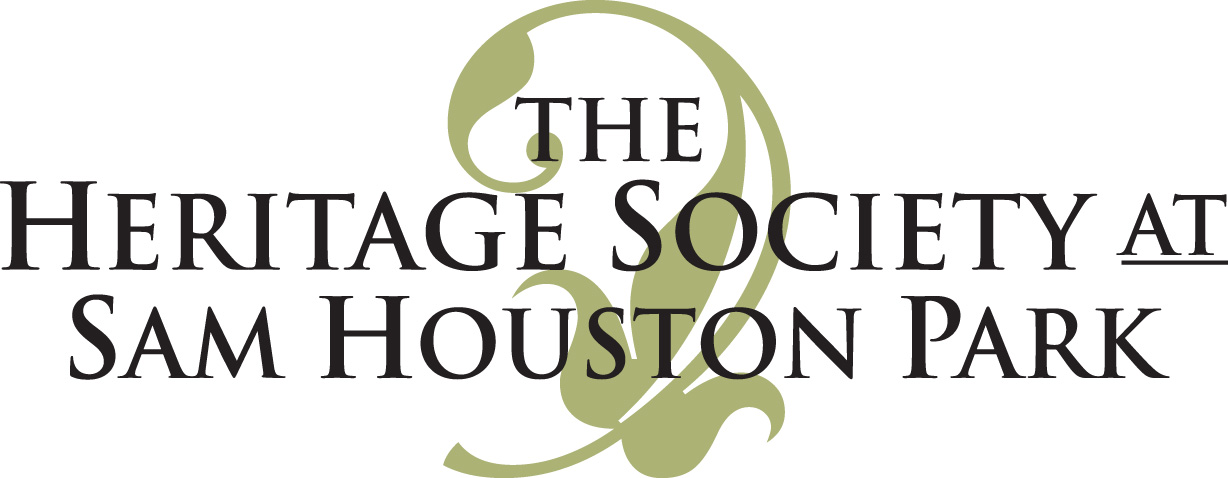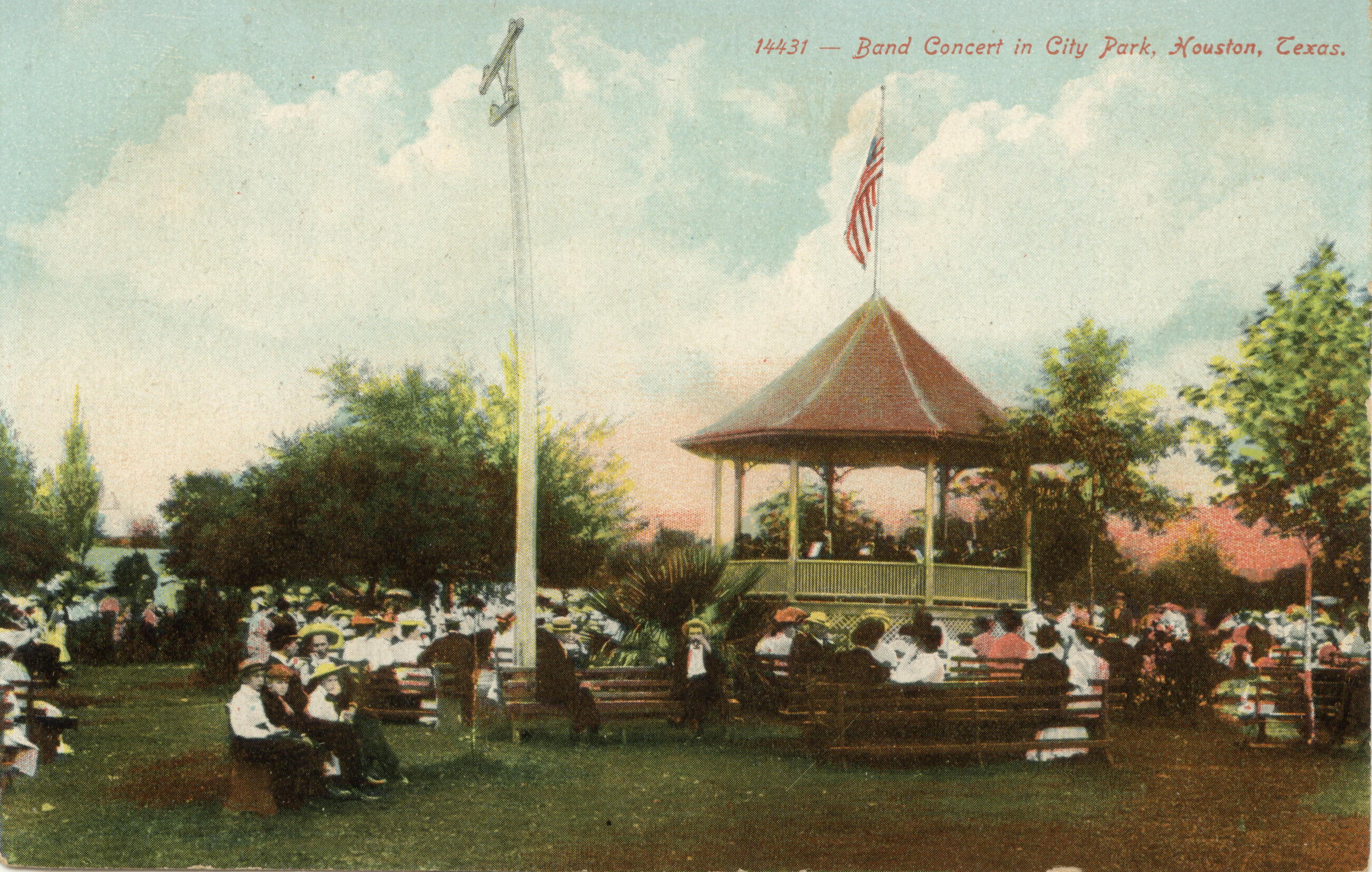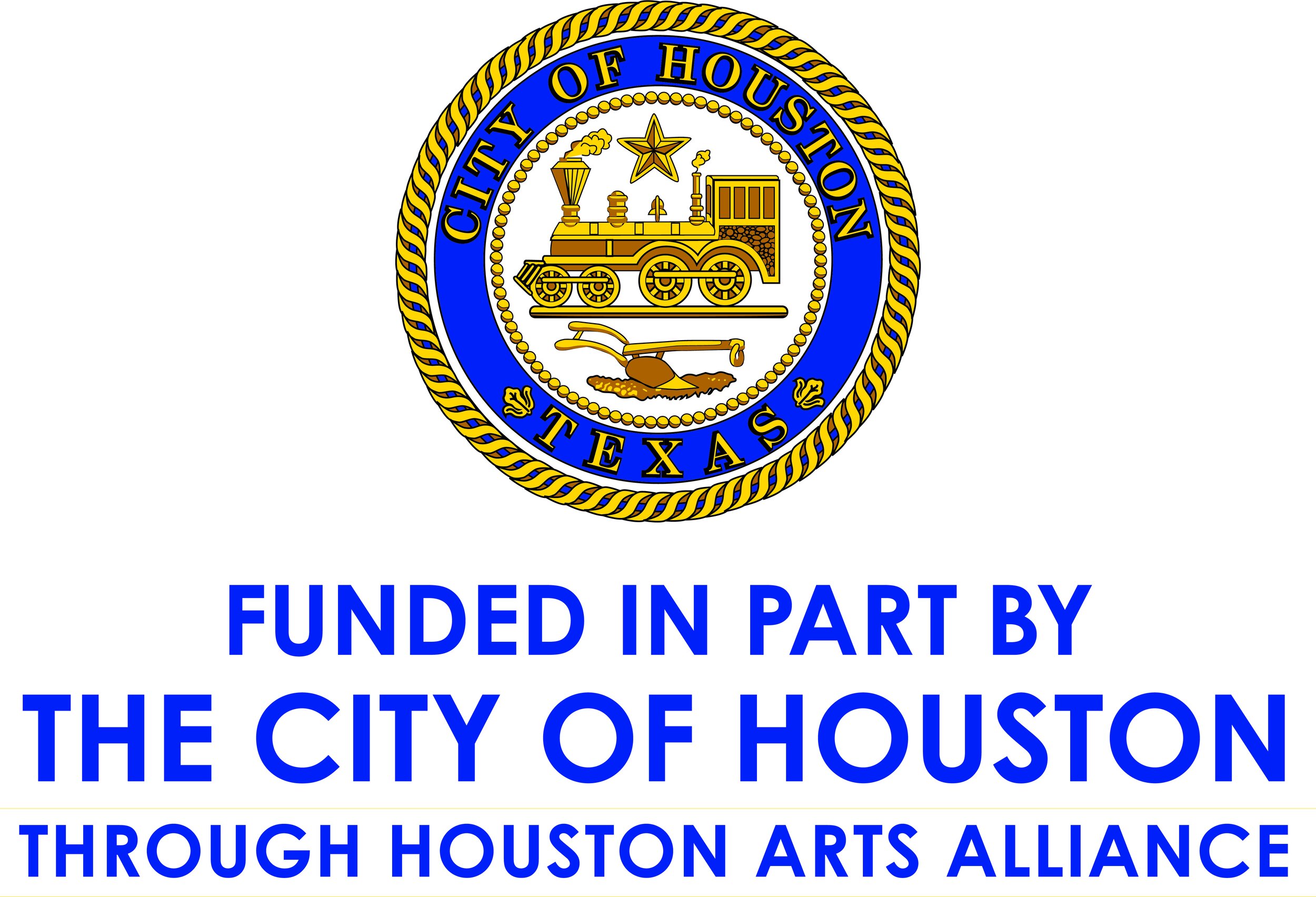Bandstands in Houston’s Parks
During the spring and summer months, Houstonians flock to the city’s parks to enjoy free concerts and other entertainment. This is a long-standing Houston tradition, perhaps even more popular in the early 20th century before the advent of air conditioning. Residents made frequent use of the city’s parks, and one typical park feature at this time was a bandstand. Bandstands, popular Victorian park features around the United States and in much of the world, were used for musical performances as well as announcements and community gathering.
The original bandstand in Sam Houston Park stood from 1901 to 1915 and was a popular setting for free concerts and other activities. Image: Permanent Collection of The Heritage Society.
When Houston’s first municipal park opened in 1899, not much time passed before a need for live entertainment was established. A bandstand was constructed in 1901 near the children’s playground, and 100 benches were added surrounding it. With help from the Houston Civic Club, the park hosted free concerts twice per week. The concert series was a popular attraction, and it was not uncommon to see 4,000 attendees on a Sunday evening. As the city park system grew, many newer parks also received bandstands. Though bandstand concerts remained popular, the permanent wooden structures in the municipal parks were somewhat short lived. In 1915, just 14 years after it was built, the Sam Houston Park (formerly City Park) bandstand was destroyed in a hurricane. It was replaced with a mobile bandstand based on those used in Kansas City parks. The mobile bandstand also replaced permanent bandstand structures in Hennessy Park and Woodland Park, as well as others in later years, in an effort to remedy “the bad appearance of stationary band stands, as the portable band stand is hauled away and stored after each concert.”
The quiosco, dedicated in the 1930s, remains the centerpiece of Hidalgo Park. The quiosco is now a Recorded Texas Historic Landmark and a City of Houston Protected Landmark.
Other bandstands have stood the test of time and can still be seen in their original forms today. A unique example is Hidalgo Park’s historic quiosco, built for use as a bandstand in the early 1930s. The Mexican-American residents of the city’s Magnolia Park neighborhood raised money and commissioned the quiosco, and it was dedicated when the park opened in 1934. The Hidalgo Park quiosco is unique in Houston for its use of faux bois (false wood) or el trabajo rustic (rustic work), in which concrete is molded by hand to resemble wood. Every surface of the quiosco – including the columns, railings, floor, roof, and ceiling – is fashioned in this way. The work was done by Vidal Lozano, a resident of Houston who was born in Mexico. An inscription in one of the steps reads, “Houston Mexicans to Their City, V Lozano.” The quiosco was designated a Recorded Texas Historic Landmark in 2010 and a City of Houston Protected Landmark this year, so Houstonians will be able to enjoy it for years to come.
Today, Houston’s oldest city park again has its very own bandstand as a reminder of the park’s earliest days. The bandstand that currently stands in Sam Houston Park is a replica constructed in the mid-1960s based on old photographs and postcards of the original structure. It is often rented for weddings and used for other programs hosted by The Heritage Society, which oversees all of the historic buildings in Sam Houston Park. To learn more, visit Facility Rentals.
The bandstand in Sam Houston Park is a 1966 replica of the original 1901 bandstand structure. The design, modified to allow for wheelchair access, was based on photographs and postcards depicting the original bandstand.










